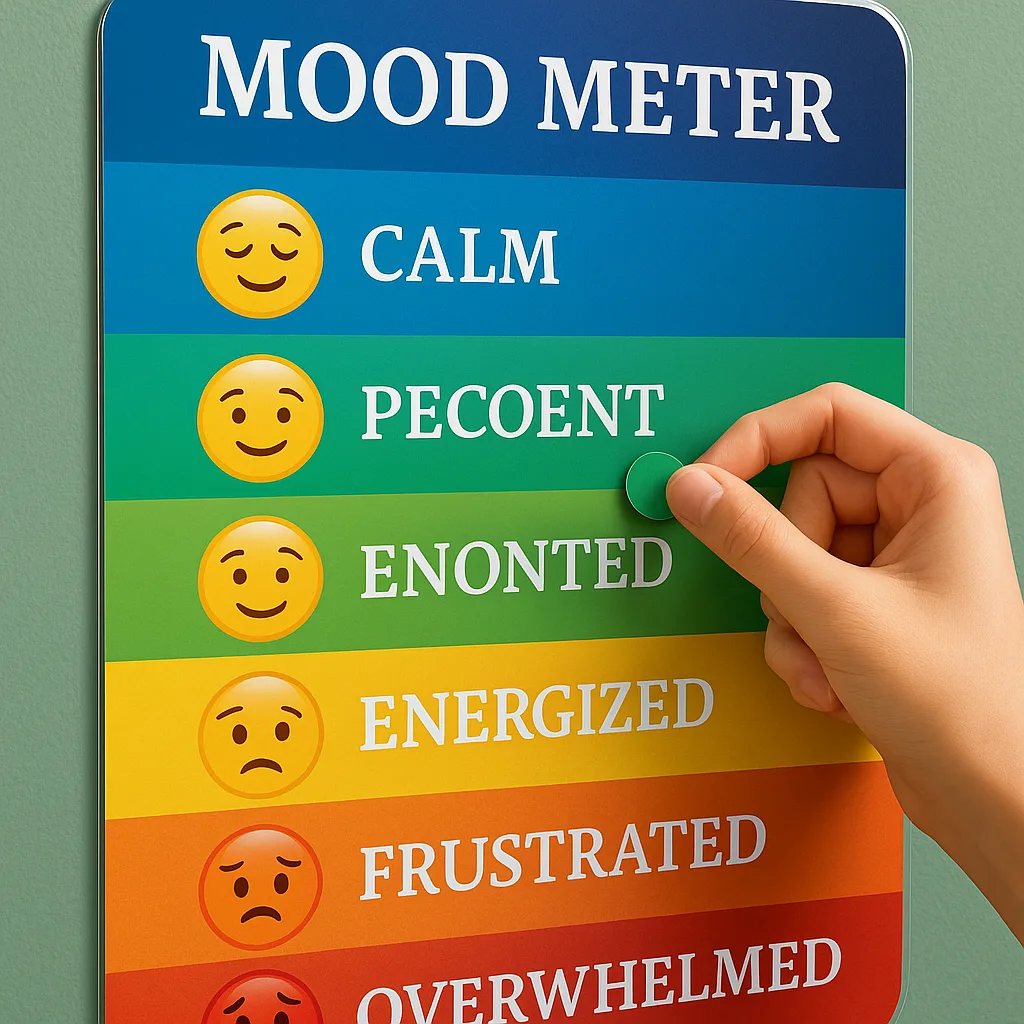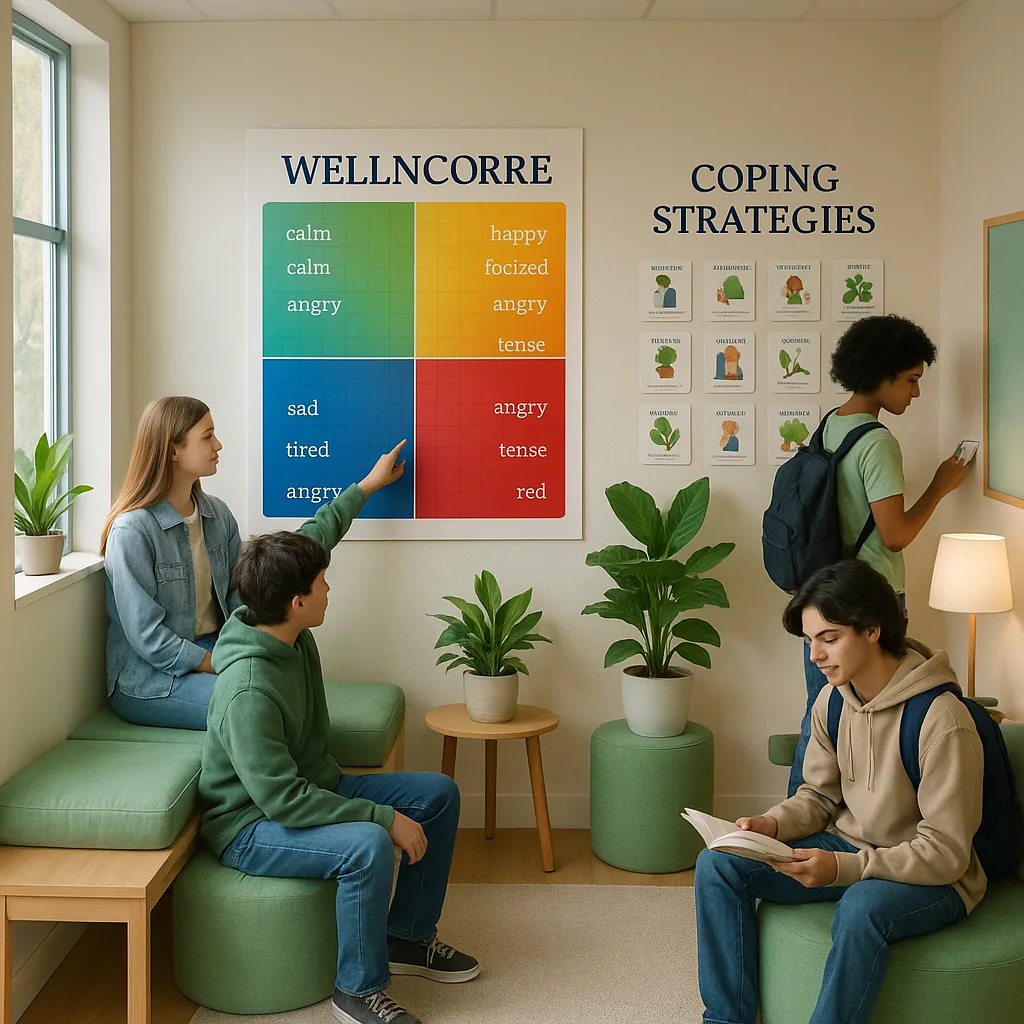School Poster Maker Mental Health Stations
Understanding Visual Wellness Checkpoints
As an educational psychologist who’s spent years developing wellness programs across the country, I’ve witnessed firsthand how visual tools can transform school mental health support. Moreover, the implementation of strategic wellness checkpoints creates a proactive rather than reactive approach to student wellbeing.
Visual wellness checkpoints are designated areas in schools where students can privately assess their emotional state, access coping strategies, and seek help when needed. Furthermore, these stations use color-coded mood meters, calming imagery, and clear visual guides that speak to students in their own language.
Research published in the Journal of Educational Psychology shows that visual mental health tools reduce help-seeking barriers by up to 40% among secondary students. Additionally, when students can communicate their needs through visual means rather than verbal disclosure, they’re three times more likely to engage with support services.
Why School Poster Maker Wellness Checkpoints Matter
Essential Components of Effective Wellness Stations
1. Mood Meter Displays
The cornerstone of any wellness checkpoint is a well-designed mood meter. Subsequently, using a Campus Pro 36 Poster Maker Advanced Package, you can create large-format mood meters that use color gradients from cool blues (calm) to warm reds (stressed or angry).
Students simply point to or mark their current emotional state without needing to verbalize their feelings. Therefore, this non-verbal communication method has proven especially effective for students experiencing selective mutism, social anxiety, or those from cultures where emotional expression is less common.

2. Coping Strategy Visual Libraries
Beyond identifying emotions, students need accessible coping strategies. Hence, create visual coping cards using vibrant, engaging graphics that illustrate techniques like box breathing, progressive muscle relaxation, or grounding exercises.
The Classroom Pro 24 Poster Maker Elite Package excels at producing these smaller, laminated strategy cards that students can take with them. Furthermore, the durable ink ensures these resources withstand daily handling while maintaining their therapeutic visual appeal.
Implementing School Poster Maker Wellness Checkpoints
Step 1: Location Selection
Choose quiet, semi-private areas like library corners, counseling office entrances, or designated wellness rooms. Additionally, ensure these spaces have adequate lighting and feel welcoming rather than clinical.
Step 2: Design Considerations
Incorporate nature-inspired colors and imagery, which research shows reduce cortisol levels. Subsequently, use your school poster printer to create cohesive visual themes across all checkpoint materials.
Step 3: Anonymous Feedback Systems
Install concern boxes with visual prompts rather than written instructions. Therefore, students can communicate needs through color-coded cards or symbol selection, maintaining complete anonymity.
Creating Stigma-Free Support Systems
One of my most successful implementations was at a high school in Oregon where we transformed their approach to mental health support. Instead of students having to knock on the counselor’s door, we created a visual check-in system using color-coded magnets on a discreet board.
Students would move their assigned magnet to different zones: green (doing well), yellow (could use a check-in), or red (need support today). Consequently, counselors could prioritize their outreach while students maintained dignity and control over their help-seeking process.
Measuring Impact and Adjusting Approaches
The data above represents typical improvement patterns we’ve observed across multiple school implementations. Furthermore, schools using comprehensive visual wellness systems report sustained improvements in overall school climate and academic performance.
Best Practices for Secondary School Implementation
Working with adolescents requires special consideration for their developmental needs and social dynamics. Therefore, involve student voices in the design process to ensure authenticity and buy-in.

